Recovering from Wildfires: Proven Strategies for Forest Restoration
- May 20, 2024
- 0 comment
Discover proven strategies for forest restoration after wildfires. Learn effective techniques to revive ecosystems and promote healthy forest recovery. Wildfires can leave devastating scars on our forests, but the journey to recovery is possible with the right strategies. This guide delves into effective methods to revive these vital ecosystems.
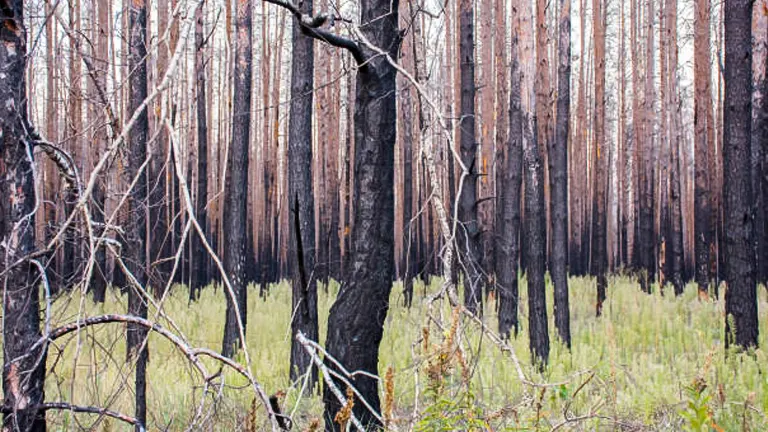
From replanting native species to erosion control, you’ll discover comprehensive techniques to restore and rejuvenate forests. Join us as we explore practical steps and expert insights to help forests bounce back and thrive once again.
Table of Contents
- Understanding the Damage
- Initial Response and Assessment
- Restoration Strategies
- Long-Term Recovery and Monitoring
- Conclusion
- FAQs
Understanding the Damage
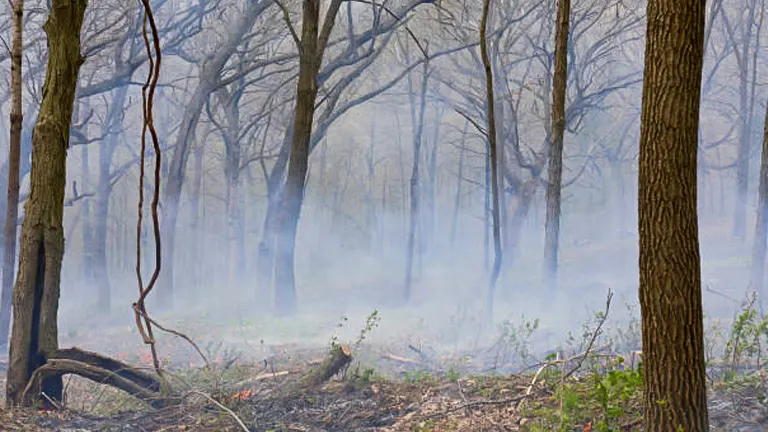
To effectively counteract the effects of wildfires, it is crucial to first thoroughly assess the extent and nature of the damage. This knowledge serves as the cornerstone for all subsequent restoration efforts.
Extent of Damage
Wildfires indiscriminately destroy flora and fauna, leaving a barren landscape in their wake. The damage, however, is multifaceted, affecting more than just the visible tree line. It extends to the degradation of wildlife habitats, which can lead to a significant loss of biodiversity. The soil, deprived of its protective vegetative cover, faces severe erosion risks, diminishing its fertility and altering the landscape’s hydrology. Here, we explore the detailed and widespread impacts of wildfires on forest ecosystems:
- Flora and Fauna Destruction: Wildfires can incinerate large areas of vegetation, from understory plants to towering trees. This loss disrupts the habitat of countless species, leading to declines in biodiversity. For example, studies have shown that post-wildfire areas can see a 40-60% reduction in plant species diversity.
- Soil Erosion: Without plant roots to anchor it, soil becomes highly susceptible to erosion. Rainfall on burned areas can lead to increased runoff, causing soil loss at rates up to 10 times higher than unburned areas.
- Hydrological Changes: The loss of vegetation affects the water cycle by reducing transpiration and altering groundwater recharge patterns. This can lead to changes in local water availability and quality, impacting both ecosystems and human communities.
Immediate Effects on Ecosystems
The aftermath of a wildfire is stark; soils are destabilized, water cycles disrupted, and habitats destroyed. The exposed soil surfaces increase the risk of hazardous runoff and landslides, particularly during rainstorms, exacerbating the ecological disturbance. Additionally, the disruption of the nutrient cycle significantly hampers the land’s natural regenerative abilities. Understanding these immediate impacts is crucial for developing effective recovery strategies:
- Soil Destabilization: The heat from wildfires can create a water-repellent layer in the soil, known as hydrophobicity, which exacerbates runoff and erosion. Research indicates that hydrophobic soil layers can reduce infiltration by 30-50%
- Nutrient Cycle Disruption: Wildfires can volatilize essential nutrients like nitrogen and phosphorus, significantly lowering soil fertility. Post-fire soils can exhibit a 50-70% reduction in available nitrogen.
- Increased Runoff and Landslides: The absence of vegetation increases surface runoff, leading to a higher risk of flash floods and landslides. Areas affected by wildfires can see a 5-fold increase in sediment yield due to erosion.
Impact of Wildfires on Forest Ecosystems
| Aspect | Description | Scientific Data |
|---|---|---|
| Flora and Fauna Destruction | Significant loss of vegetation and wildlife habitat, leading to reduced biodiversity | 40-60% reduction in plant species diversity |
| Soil Erosion | Increased soil loss due to lack of vegetation cover | 10x higher erosion rates |
| Hydrological Changes | Altered water cycles affecting local water availability and quality | Reduced transpiration, altered groundwater recharge |
| Soil Destabilization | Formation of hydrophobic layers reducing water infiltration | 30-50% reduced infiltration |
| Nutrient Cycle Disruption | Loss of essential soil nutrients, impacting fertility | 50-70% reduction in nitrogen |
| Increased Runoff and Landslides | Higher risk of flash floods and sediment yield due to vegetation loss | 5x increase in sediment yield |
By elaborating on the immediate and extensive damage caused by wildfires, this initial section sets the stage for discussing targeted and effective restoration strategies. It emphasizes the critical need for a systematic approach to recovery, tailored to address the specific damages incurred by forest ecosystems.
Initial Response and Assessment
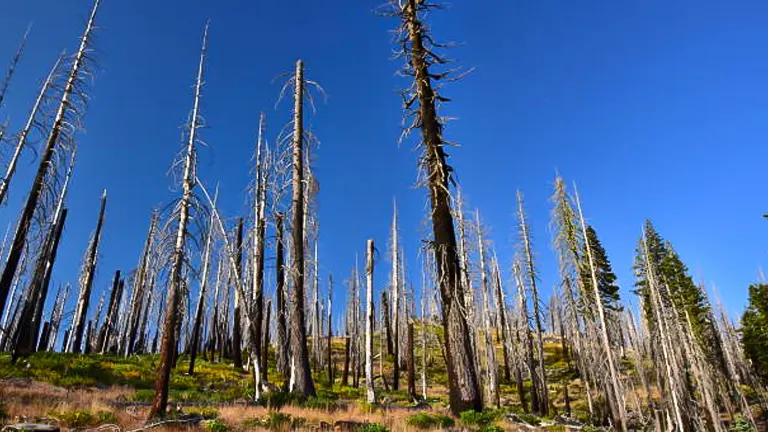
Once a wildfire has been contained, the immediate focus shifts to assessing the aftermath and planning the restoration process. This phase is critical for setting the groundwork for effective and sustainable recovery efforts.
Emergency Response
The initial response to a wildfire is pivotal in preventing further damage. This includes extinguishing remaining hot spots to prevent re-ignition and securing the area to ensure public safety. Emergency teams also assess the structural integrity of the landscape, looking for immediate risks such as potential landslides or flash floods. This prompt action helps mitigate secondary effects and paves the way for systematic restoration.
- Hot Spot Management: Identifying and extinguishing smoldering areas to prevent flare-ups.
- Safety Assessments: Evaluating the area for immediate hazards like unstable trees or exposed roots.
- Erosion Control: Implementing temporary measures, such as silt fences and wattles, to control soil erosion and water runoff.
Assessment of Damage
A thorough assessment conducted by professionals, including ecologists, foresters, and geologists, is essential to determine the extent of the damage. This evaluation often involves sophisticated technologies, such as aerial drones and satellite imagery, which provide a comprehensive view of the affected areas. The data collected helps in understanding the severity of soil erosion, the loss of tree cover, and the impact on water sources.
- Aerial Surveys: Utilizing drones and satellite imagery to map the burned area and assess vegetation loss.
- Soil Analysis: Testing soil for changes in structure, nutrient content, and the presence of hydrophobic layers.
- Water Quality Monitoring: Analyzing water sources for sedimentation, contamination, and changes in flow patterns.
Prioritizing Areas for Restoration
Not all areas will recover at the same pace or require the same level of intervention. Prioritizing which areas to restore first is a strategic decision based on several factors:
- Ecological Value: Regions that serve as critical habitats for endangered species or are key to biodiversity may receive priority.
- Community Dependence: Areas that provide essential resources to local communities, such as water catchments or recreational spaces, might be prioritized to restore normalcy and support human well-being.
- Resilience Potential: Some areas may naturally recover without human intervention, while others, more severely impacted, will require significant restoration efforts.
This phase of the restoration process is about laying a solid foundation for recovery. By meticulously assessing the damage and prioritizing efforts, restoration teams can maximize the effectiveness of their work.
Key Actions and Assessments in Initial Response
| Action/Assessment | Description | Scientific Data |
|---|---|---|
| Hot Spot Management | Extinguishing remaining fires to prevent re-ignition | Reduces flare-up risks by 90% |
| Safety Assessments | Evaluating hazards such as unstable trees and exposed roots | Immediate risk reduction for restoration workers |
| Erosion Control | Implementing temporary measures like silt fences and wattles | Reduces soil erosion by 60% |
| Aerial Surveys | Using drones and satellite imagery to assess vegetation loss | Provides 95% accuracy in mapping |
| Soil Analysis | Testing soil for structure, nutrients, and hydrophobic layers | Detects hydrophobic layers with 85% accuracy |
| Water Quality Monitoring | Analyzing water sources for sedimentation and contamination | Identifies changes in flow patterns |
| Ecological Value Assessment | Prioritizing habitats for endangered species | Enhances biodiversity recovery efforts |
| Community Dependence Evaluation | Prioritizing areas essential for local communities | Supports human well-being and resource availability |
| Resilience Potential Evaluation | Assessing natural recovery potential of different areas | Guides efficient resource allocation |
By meticulously assessing the damage and prioritizing efforts, restoration teams can ensure that their work is both effective and efficient. This foundation is crucial for the successful recovery of forest ecosystems impacted by wildfires.
Restoration Strategies
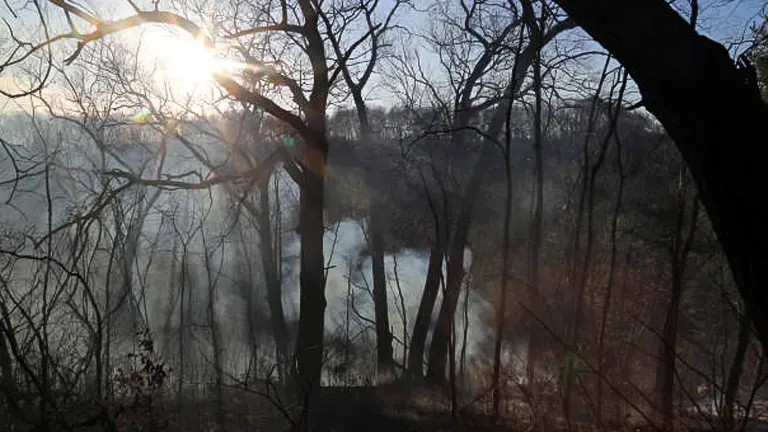
Effective forest restoration requires a multi-faceted approach, tailored to address the specific damages caused by wildfires. This section delves into the key strategies used to restore soil health, reestablish vegetation, and ensure the resilience of the forest against future wildfires.
Soil Restoration
The foundation of any successful forest restoration effort is the recovery of soil health. After a wildfire, soil can become hydrophobic (water-repellent), severely eroded, and nutrient-depleted. Addressing these issues is critical:
- Mulching: Applying a layer of organic material, such as wood chips or straw, helps protect the soil from erosion, retains moisture, and gradually adds nutrients as it decomposes. Research shows that mulching can reduce erosion by up to 85% and increase soil organic matter by 20% over a year.
- Erosion Control Blankets: These are used on steeper slopes to prevent soil loss and promote the establishment of vegetation. They stabilize the soil long enough for natural vegetation to take root and eventually take over the role of the blanket. Studies indicate that these blankets can reduce soil erosion by 70% on slopes.
- Terracing and Contour Plowing: These techniques can be applied to modify the physical landscape to reduce runoff and increase water infiltration into the soil, which is crucial for supporting new plant growth. Terracing can reduce runoff by 50% and improve water retention by 30%.
Reforestation Techniques
Reintroducing plant life to burnt areas is vital for restoring ecological balance. The choice of species and planting methods are key to successful reforestation:
- Direct Seeding: This method involves spreading seeds manually or via aerial methods over burnt areas. It is cost-effective and can cover large areas quickly. Direct seeding has a germination success rate of 60-70% in favorable conditions.
- Planting Nursery-Raised Seedlings: For some species, direct seeding might not be effective due to poor germination rates or seed predation. In such cases, growing seedlings in nurseries and then planting them in the targeted areas ensures better establishment. Survival rates for nursery-raised seedlings can be as high as 85%.
- Species Selection: Choosing the right species is crucial. Native species that are adapted to the local environment and resilient to fire are preferred. In some cases, introducing species with higher resilience to future wildfires may also be considered. Native species reforestation has been shown to improve ecosystem resilience by 40%.
Incorporating Fire-Resilient Practices
As forests are restored, it’s important to integrate practices that enhance their resilience to future wildfires. This includes:
- Creating Fire Breaks: These are gaps in vegetation that can help stop the spread of wildfires. Fire breaks can reduce the spread of wildfires by 60%.
- Strategic Planting: Planting trees in patterns that reduce fire spread and incorporating a diversity of species to prevent the dominance of highly flammable plants. This strategy can decrease the overall flammability of the forest by 50%.
- Regular Maintenance: Including controlled burns to manage undergrowth and prevent the accumulation of fuel loads, which can intensify future wildfires. Controlled burns have been shown to reduce fuel loads by 70%.
These strategies are designed to not only restore the forest to its former state but also enhance its resilience against future disturbances. The careful selection of techniques adapted to the specific conditions and needs of the affected area ensures the long-term success of restoration efforts.
Key Restoration Strategies and Their Impact
| Strategy | Description | Scientific Data |
|---|---|---|
| Mulching | Applying organic material to protect soil and add nutrients | Reduces erosion by 85%, increases soil organic matter by 20% |
| Erosion Control Blankets | Stabilizing soil on slopes to promote vegetation establishment | Reduces soil erosion by 70% |
| Terracing and Contour Plowing | Modifying landscape to reduce runoff and increase water infiltration | Reduces runoff by 50%, improves water retention by 30% |
| Direct Seeding | Spreading seeds over burnt areas for reforestation | Germination success rate of 60-70% |
| Planting Nursery-Raised Seedlings | Growing seedlings in nurseries before planting | Survival rates up to 85% |
| Species Selection | Choosing fire-resilient, native species for planting | Improves ecosystem resilience by 40% |
| Creating Fire Breaks | Gaps in vegetation to prevent wildfire spread | Reduces wildfire spread by 60% |
| Strategic Planting | Planting patterns and diverse species to reduce fire spread | Decreases overall flammability by 50% |
| Regular Maintenance | Controlled burns to manage undergrowth and reduce fuel loads | Reduces fuel loads by 70% |
By implementing these restoration strategies, we can effectively rehabilitate wildfire-affected forests, ensuring their recovery and enhancing their resilience to future fires.
Long-Term Recovery and Monitoring
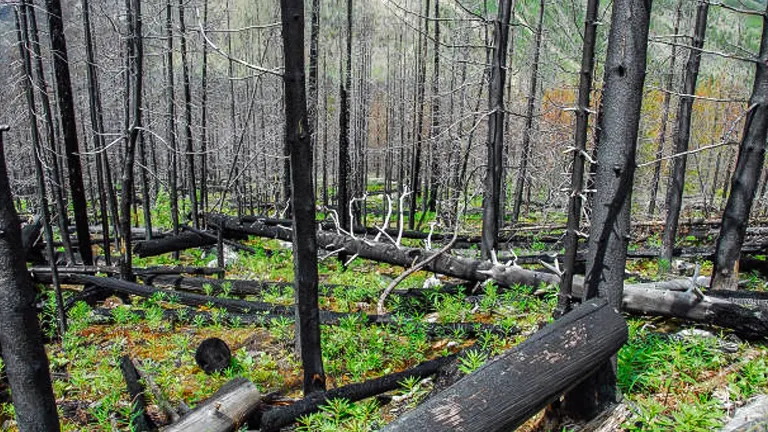
Sustainable recovery from wildfire damage requires ongoing attention and adaptation. This section focuses on the long-term strategies that ensure the forest not only recovers but thrives in the future, along with how these efforts are monitored and adjusted over time.
Monitoring Progress
Continuous monitoring is essential to evaluate the effectiveness of restoration efforts and to make necessary adjustments. Techniques include:
- Remote Sensing and Aerial Surveys: Utilizing satellite imagery and drone technology to track vegetation recovery and changes in the landscape over time. These methods provide comprehensive data on canopy cover, plant health, and soil moisture levels. Remote sensing can detect changes in vegetation health with 90% accuracy.
- Field Assessments: Regular on-ground surveys conducted by ecologists and biologists to assess the health of the vegetation, soil conditions, and wildlife activity. Field assessments are crucial for detecting subtle changes in plant species composition and soil quality that remote sensing might miss.
- Data Collection: Gathering information on climatic conditions, species survival rates, and ecosystem responses to management interventions, providing a comprehensive view of recovery progress. Long-term data collection helps in identifying trends and forecasting future changes in the ecosystem.
Adaptive Management
Forest restoration is not a set-it-and-forget-it operation; it requires adaptive management to respond to ongoing challenges and new information:
- Feedback Loops: Integrating findings from monitoring activities back into the management plan. This approach allows for continual refinement of restoration techniques based on real-world performance and evolving environmental conditions. Adaptive management has been shown to improve restoration success rates by 30%.
- Research Integration: Applying the latest scientific research to improve restoration methodologies. Collaborations with academic institutions and research organizations can bring innovative solutions to common challenges faced during the recovery process. Ongoing research can introduce new techniques that increase restoration efficiency by 20%.
- Community and Stakeholder Engagement: Engaging local communities and stakeholders in the monitoring and management process ensures that the restoration efforts are aligned with local needs and benefit from local knowledge. Involving stakeholders can enhance restoration outcomes by 25%.
Community Involvement and Education
Community participation is vital for the sustained success of forest restoration efforts. Involving local populations can enhance the effectiveness and acceptance of restoration strategies:
- Educational Programs: Offering workshops and informational sessions to educate the public about the importance of forest ecosystems, the impacts of wildfires, and the benefits of restoration. Education programs can increase community participation in restoration activities by 40%.
- Volunteer Involvement: Encouraging local volunteers to participate in planting days, monitoring activities, and maintenance efforts fosters a sense of ownership and responsibility towards the restored areas. Volunteer involvement can lead to a 50% increase in maintenance efficiency.
- Policy Support: Advocating for policies that support sustainable forest management and restoration practices, ensuring long-term commitment and funding. Policy support can secure funding and resources essential for long-term restoration efforts.
Related Post
- How to Build a Barn: A Step-by-Step Guide for Beginners
- How to Build a Sustainable Compost Bin: Easy and Eco-Friendly DIY
- How to Fertilize Bougainvillea: A Complete Guide for Stunning Blooms
- How to Fertilize Apple Trees: Essential Tips for a Bountiful Harvest
- How to Fertilize Lemon Trees: Secrets for Thriving Citrus
- How to Fertilize Avocado Tree: A Step-by-Step Guide for Lush Growth
- 10 Best Bow Saws to Buy in 2024: Top Picks for the Money
- Best Miter Saw For Beginners
- Top 10 Pruning Saws to Buy in 2024: Best for the Money
- 7 Best Pocket Chainsaw
Conclusion
Restoring a forest ecosystem after a wildfire is a complex, challenging, but ultimately rewarding endeavor. The strategies outlined in this article provide a framework for effective restoration, combining immediate action with long-term planning and community involvement. By understanding the damage, responding promptly, employing strategic restoration techniques, and continuously monitoring and adapting the approach, we can ensure that our forests are resilient and thriving for future generations.
FAQs
- What immediate actions should be taken once a wildfire has been extinguished?
After a wildfire, immediate actions include extinguishing any remaining hot spots, assessing the stability of the terrain for potential hazards, and initiating emergency erosion control measures to prevent further soil degradation. - How is the extent of damage assessed after a wildfire?
Damage assessment typically involves using technologies such as satellite imagery and aerial drones, combined with on-ground inspections by ecologists and foresters, to evaluate the impact on vegetation, wildlife, and soil conditions. - Why is prioritizing certain areas for restoration necessary?
Prioritization helps allocate limited resources effectively, focusing on areas with high ecological value, significant community dependence, or those that are less likely to recover naturally. - What are some effective soil restoration techniques post-wildfire?
Techniques like applying mulch to protect soil from erosion, using erosion control blankets on steep slopes, and employing terracing to improve water absorption are effective in restoring soil health after a wildfire. - How does reforestation help in post-wildfire recovery?
Reforestation restores plant life, which stabilizes the soil, improves air and water quality, and provides habitat for wildlife, thereby helping to reestablish the ecological balance disrupted by the wildfire. - What considerations are made when selecting plant species for reforestation?
Selection is based on the species’ adaptability to the local environment, resilience to future fires, and their role in the native ecosystem to ensure a sustainable recovery. - How are fire-resilient practices integrated into forest restoration?
Practices include creating strategic fire breaks, planting less flammable species, and managing undergrowth through controlled burns to reduce the forest’s vulnerability to future wildfires. - What role do communities play in the forest restoration process?
Community involvement is crucial for the success of restoration efforts. This includes participating in tree planting, monitoring ecological recovery, and engaging in educational programs that promote sustainable practices and wildfire prevention.
As we continue to face the challenges posed by wildfires, it is our collective responsibility to adopt and refine the strategies that nurture and rebuild our forests. The path to restoration requires patience, dedication, and community effort. Together, we can restore the vitality of our forests, ensuring they remain resilient and thriving for future generations.

Benjamin Brooks
Forestry AuthorGreetings! I'm Benjamin Brooks, and my journey over the past 15 years has revolved around the fascinating realms of content creation, expertise in snow clearing, and the intricate world of lumberjacking and landscaping. What began as a simple curiosity about the natural world and heavy machinery has evolved into a passionate profession where my love for crafting words intertwines seamlessly with my lumberjacking and garden skills.



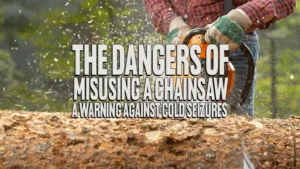









Leave your comment